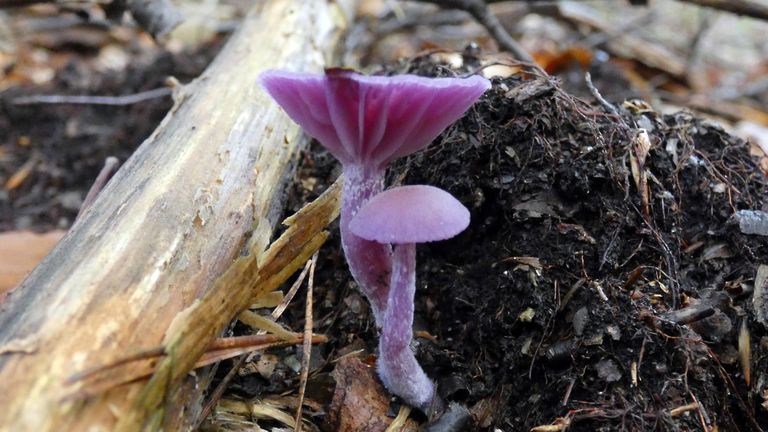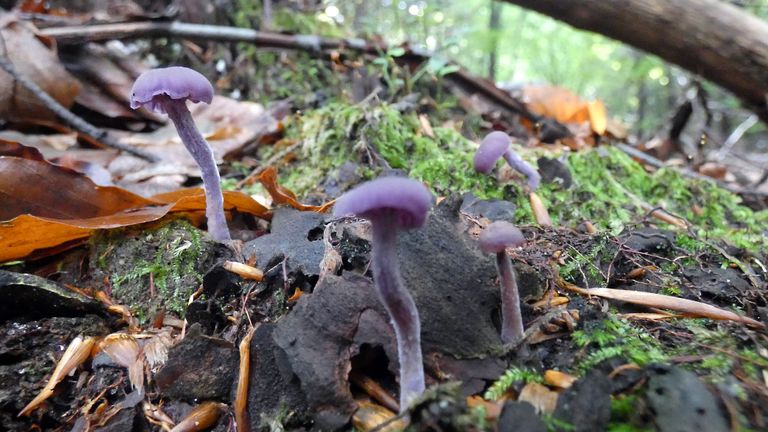
The hat of a young marshmallow can have different shapes. Circular to semicircular, wavy or bell-shaped, sometimes the rim is rolled up with a dimple in the center, in older fruiting bodies the cap may have wrinkled edges, then become flat and funnel-shaped. In very old specimens, the hat may curl upwards to reveal the gills. It can have a diameter of 2 to 6 cm. The epidermis is velvety, the adults have slightly grooved edges. In high humidity or during the rainy season, it is most often purple in color, sometimes turning brown. On warm and sunny days, be white-purple.

The gills are attached to the stem, folded, thick. Young fruiting bodies are purple, then sprinkled with white spores.


The stem may be 3–12 cm high and 3–12 mm thick. The same color as the hat, inside it is hollow, fibrous, a little thick at the bottom. The flesh is slightly smelling, watery, and slightly purple in rainy weather. The spores are white.


Occurrence. The species is very popular in Europe, Asia, North and Central America also in New Zealand. Apart from forests, mainly beech trees, you can meet the lacquer tree, parks, gardens and other habitats on rotten wood or on the ground, both under deciduous and coniferous trees, but most often under beech trees. This specimen was found in a mixed forest, the predominant trees are pine, spruce and most beech. |


Properties: he mushroom is edible, but not very tasty, it has no special use in the kitchen. Sometimes it is used in tinctures for a nice color.

NOTE: It is not recommended to collect this species by inexperienced people

blurtlife blurtchef blurt blurthealth blurtstory food health r2cornell
Beautiful post.